Observation Weeks
Observation Material
GAM_Saturn_0413_Moons
|
Here we have the same set of images shown in the previously posted "GAM_Saturn_0413" image, however, the brightness has been enhanced to show a few of the moons orbiting around Saturn. Given that Triton's orbital period is around 5.9 days, can you use these images to determine which of the moons it is? Are you able to identify any of the other moons? Is there any other planetary characteristic that we can determine from the motion of planetary moons? Remember that the plane of Saturn's rings gives you a clue as the orbital plane of Saturn's moons. |
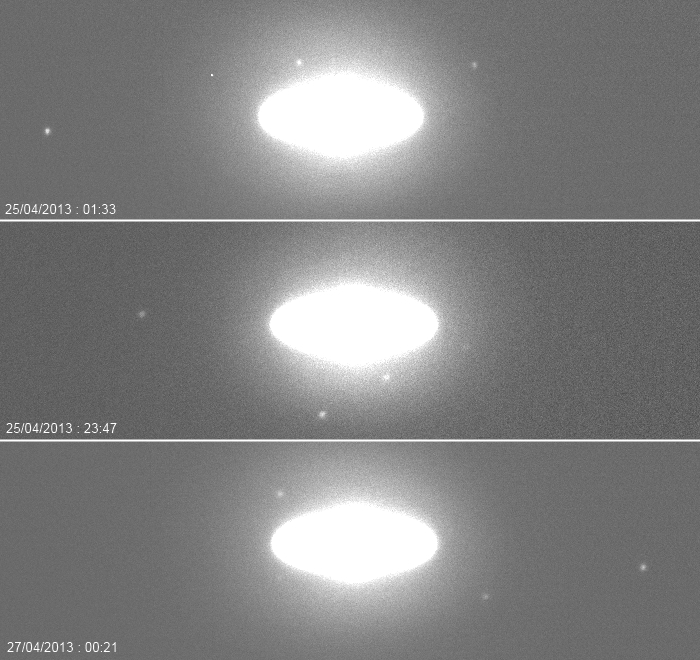 click on image to enlarge
|
- luettu %count kertaa
GAM_Saturn_0413
|
Here we have three images of Saturn taken using the Liverpool Telescope over the past week. Although we are able to see some horizontal surface features on the gas giant planet, the observations are more useful in showing how the clarity of images can vary over time, dependent on how much moisture and turbulence is in the atmosphere. The 4800km wide Cassini division (or dark gap) is clearly visible within Saturn's complex ring system, a system that is primarily made up of water ice particles ranging in size from micrometres to metres. Given that the gap is around a third the diameter of Earth, we can quickly determine that Saturn is much larger in comparison. The following link provides a learning activity related to the characteristics of the planets in our Solar System. |
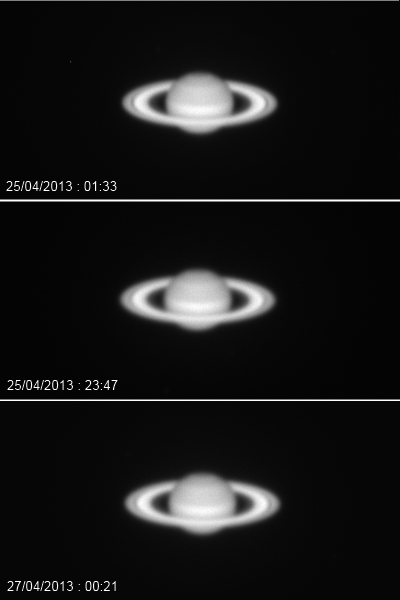 click on image to enlarge
|
- luettu %count kertaa
GAM_Moon_LT_280413
|
This sharp image of just a small section of the Moon was taken on the 28th April 2013 by the Liverpool Telescope. We like it because it shows how the shadows lengthen as one approaches the lunar terminator - the line between illuminated and dark parts of the Moon's surface. The smoother region towards the centre of the image is known as Mare Fecunditatis, and is a flat basaltic plains that were formed by ancient volcanic eruptions. The small craters within it were created more recently. The field-of-view of the Liverpool Telescope is only 4.6 arcminutes, hence we can only see a small part of the 29 arcminute diameter moon. Why not try to identify which part of the Moon this image relates to using the moon map found at the following link: |
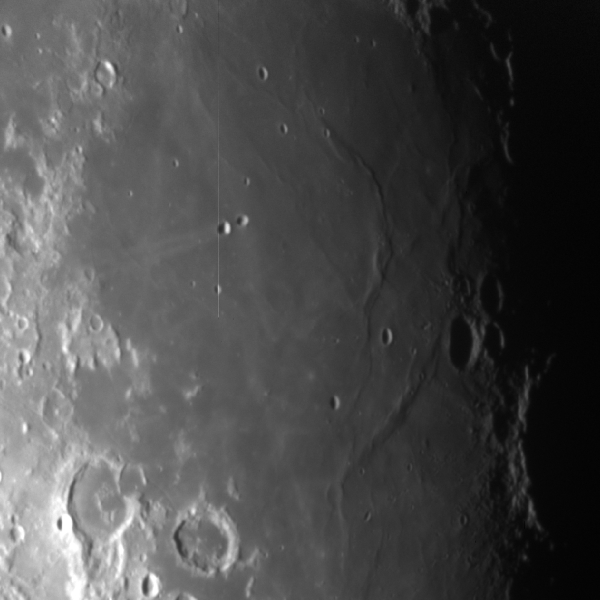 click on image to enlarge
|
- luettu %count kertaa
GAM_Moon_LT_261012
|
Here we have a rather nice image of a small part of the Moon from the Liverpool Telescope archive. The large crater towards the centre of the image is the Plato Crater, which is approximately 101km across. The dark region above it is known as Mare Frigoris, whilst below it is the Mare Imbrium region. Mare, otherwise known as lunar seas, are flat basaltic plains that were formed by ancient volcanic eruptions. The field-of-view of the Liverpool Telescope is only 4.6 arcminutes, hence we can only see a small part of the 29 arcminute diameter moon. If you would like to learn more about the lunar surface, there is a useful moon map at the following link: |
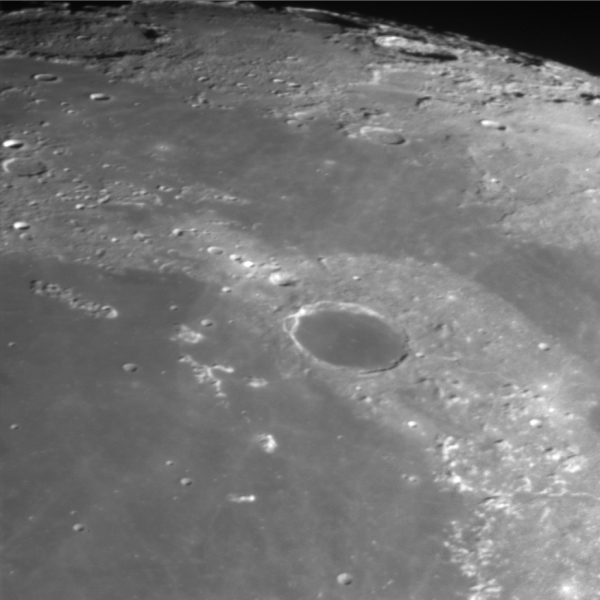 click on image to enlarge
|
- luettu %count kertaa
GAM_Orion_LT_130311_0010
|
Image 9 of 9 Date: 11/03/13 - 00:10 UT This image was taken using the all-sky camera on the Liverpool Telescope enclosure. It is part of a series taken on the night of 10/03/2013 that shows how the constellation of Orion moves across the night sky. We use the all-sky camera to check on the cloud situation, but it is also useful for capturing meteors and satellites. If you look at the images carefully, what is strange about the image orientation? Can you work out which way is North ... how? What other constellations and features can you see in the image? Orion is one of 88 constellations (groups of stars), and the following guide provides some more information about them: |
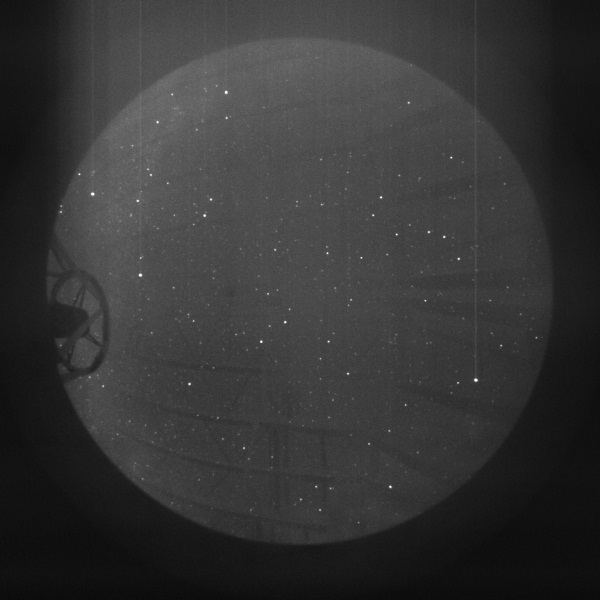 click on image to enlarge
|
- luettu %count kertaa
GAM_Orion_LT_130310_2340
|
Image 8 of 9 Date: 10/03/13 - 23:40 UT This image was taken using the all-sky camera on the Liverpool Telescope enclosure. It is part of a series taken on the night of 10/03/2013 that shows how the constellation of Orion moves across the night sky. We use the all-sky camera to check on the cloud situation, but it is also useful for capturing meteors and satellites. If you look at the images carefully, what is strange about the image orientation? Can you work out which way is North ... how? What other constellations and features can you see in the image? Orion is one of 88 constellations (groups of stars), and the following guide provides some more information about them: |
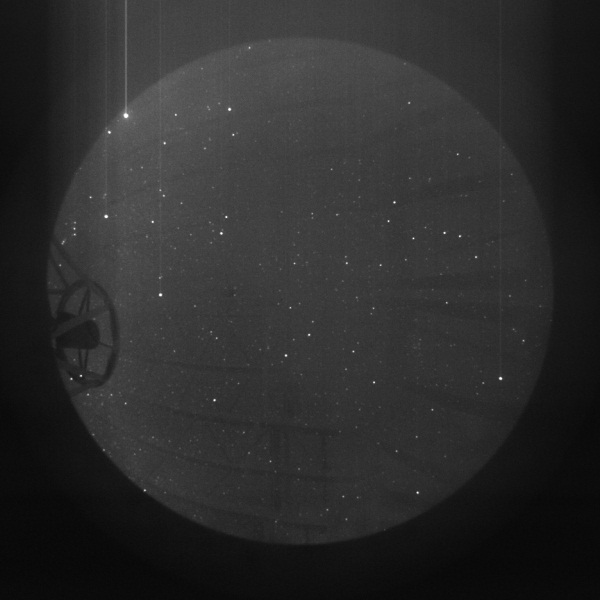 click on image to enlarge
|
- luettu %count kertaa
GAM_Orion_LT_130310_2310
|
Image 7 of 9 Date: 10/03/13 - 23:10 UT This image was taken using the all-sky camera on the Liverpool Telescope enclosure. It is part of a series taken on the night of 10/03/2013 that shows how the constellation of Orion moves across the night sky. We use the all-sky camera to check on the cloud situation, but it is also useful for capturing meteors and satellites. If you look at the images carefully, what is strange about the image orientation? Can you work out which way is North ... how? What other constellations and features can you see in the image? Orion is one of 88 constellations (groups of stars), and the following guide provides some more information about them: |
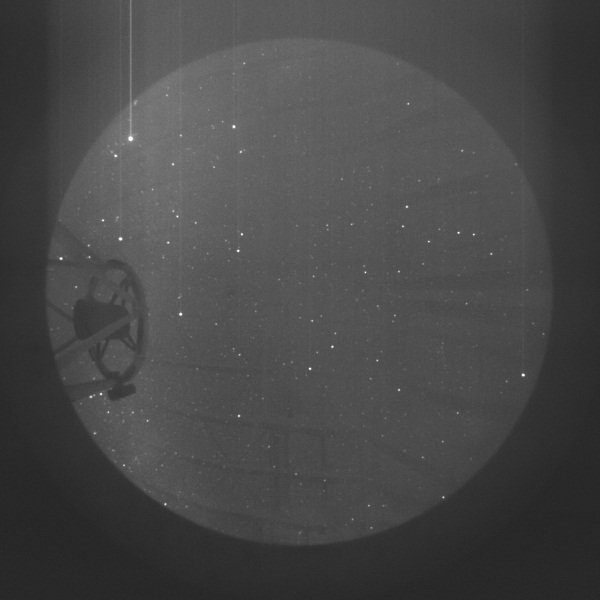 click on image to enlarge
|
- luettu %count kertaa
GAM_Orion_LT_130310_2240
|
Image 6 of 9 Date: 10/03/13 - 22:40 UT This image was taken using the all-sky camera on the Liverpool Telescope enclosure. It is part of a series taken on the night of 10/03/2013 that shows how the constellation of Orion moves across the night sky. We use the all-sky camera to check on the cloud situation, but it is also useful for capturing meteors and satellites. If you look at the images carefully, what is strange about the image orientation? Can you work out which way is North ... how? What other constellations and features can you see in the image? Orion is one of 88 constellations (groups of stars), and the following guide provides some more information about them: |
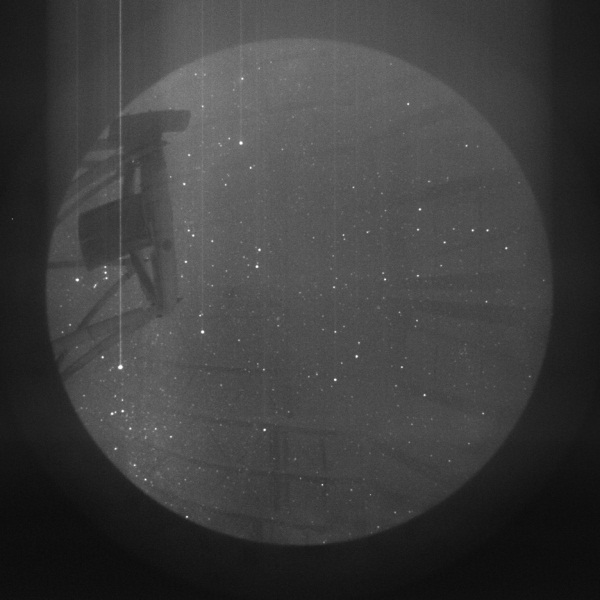 click on image to enlarge
|
- luettu %count kertaa
GAM_Orion_LT_130310_2210
|
Image 5 of 9 Date: 10/03/13 - 22:10 UT This image was taken using the all-sky camera on the Liverpool Telescope enclosure. It is part of a series taken on the night of 10/03/2013 that shows how the constellation of Orion moves across the night sky. We use the all-sky camera to check on the cloud situation, but it is also useful for capturing meteors and satellites. If you look at the images carefully, what is strange about the image orientation? Can you work out which way is North ... how? What other constellations and features can you see in the image? Orion is one of 88 constellations (groups of stars), and the following guide provides some more information about them: |
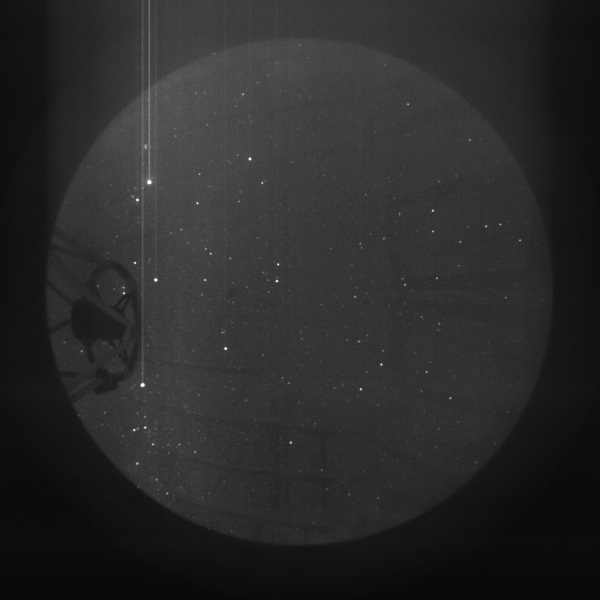 click on image to enlarge
|
- luettu %count kertaa
GAM_Orion_LT_130310_2140
|
Image 4 of 9 Date: 10/03/13 - 21:40 UT This image was taken using the all-sky camera on the Liverpool Telescope enclosure. It is part of a series taken on the night of 10/03/2013 that shows how the constellation of Orion moves across the night sky. We use the all-sky camera to check on the cloud situation, but it is also useful for capturing meteors and satellites. If you look at the images carefully, what is strange about the image orientation? Can you work out which way is North ... how? What other constellations and features can you see in the image? Orion is one of 88 constellations (groups of stars), and the following guide provides some more information about them: |
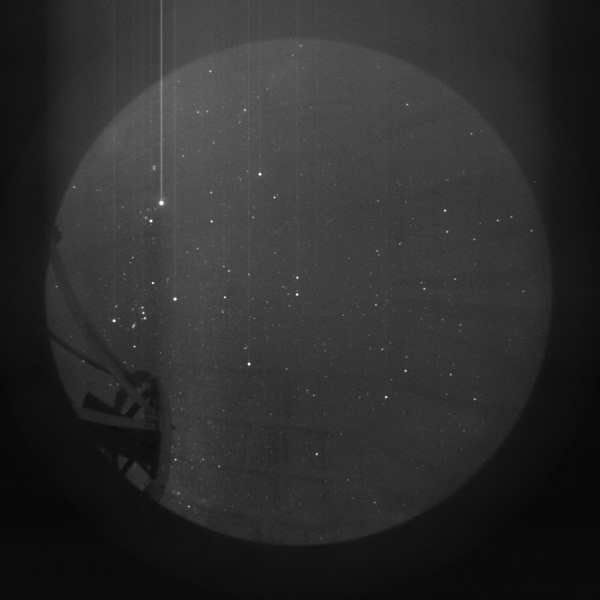 click on image to enlarge
|
- luettu %count kertaa
Observation Material (Portuguese only)
Celebrar o Céu Noturno
|
Vivemos num pequenino planeta chamado Terra. Como dizia o visionário Carl Sagan: " ... é aqui o palco das nossas vidas. Todos os seres humanos que já conhecemos, que já existiram ou existirão no futuro próximo viveram e viverão aqui ... ". Em um dos episódios mais bonitos da séria Cosmos, ele profere uma frase que deveria estar na memória de todos os seres humanos, referindo a capacidade de alguns seres humanos em fazer o mal para serem "......... lideres momentâneos de uma fração de um ponto ...... " Estamos convencidos que a poluição luminosa afasta os seres humanos do seu contato com o Universo. As pessoas esquecem de olhar para os céus, poucos preocupam-se em saber de onde viemos, o que estamos aqui a fazer, e para onde vamos. Que futuro? Fica aqui o desafio e a ideia de utilizarmos a luta contra a poluição luminosa como ferramenta de partilha e promoção de um renovado interesse dos jovens pensadores. Uma bonita seleção de imagens encontra-se neste portal e algumas ideias para ajudar a recriar o método científico em sala de aula. Juntem-se a este desafio e faça a diferença. Algumas atividades para inspiração: Adota uma rua e salva uma estrelinha Como é que a poluição luminosa afeta as estrelas? Ver ou não ver, eis a questão... Auditoria - Iluminação Pública Stellarium – Relacionar magnitude com poluição luminosa Algumas imagens inspiradoras de Babak Tafreshi e Miguel Claro |
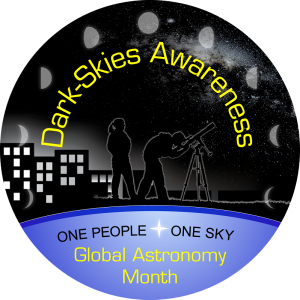 click on image to enlarge
|
- luettu %count kertaa
O Sol durante o Mês Global da Astronomia 2013
|
Estes espectroheliogramas do Sol foram obtidos na risca CAII K1V e K3 (linhas de Cálcio)e na risca H-alfa (hidrogénio). As riscas de K1v permitem obter informação acerca da fotosfera solar (a fotosfera pode ser identificada como a superfície do Sol). Na fotosfera podemos observar as manchas, áreas onde ocorre uma forte concentração de campos magnéticos e que são mais frias do que as regiões vizinhas. Elas são o resultado dos movimentos ascendentes e descendentes do gás, que ocorrem na região próxima da superfície, a zona de conveção, e também como resultado do movimento de rotação do Sol. O campo magnético gerado no interior ascende à superfície dando origem às manchas. Mas não se deixe enganar, quando dizemos que são regiões mais frias estamos a falar de temperaturas da ordem dos 3 000K a 4 000K, em comparação com as restantes partes da superfície que tem uma temperatura da ordem dos 6 000K. As riscas de Cálcio ionizado K3 permitem observar a cromosfera solar,a região equivalente à atmosfera solar. Nesta região podem ser observadas as regiões faculares, zonas mais quentes que representam concentrações moderadas de fluxo magnético. Na risca H-alfa, onde vemos também a atividade da cromosfera, podem ser observados os filamentos e as erupções.(excertos do guião do Sun4all). Abaixo encontrará links para imagens feitas ao longo do mês de Abril. Durante todo o mês vamos partilhar neste espaço as imagens logo que forem obtidas pelo Observatório Astronomico de Coimbra. Volte e veja a evolução da atividade solar ao longo desde mês dedicado à astronomia. Se pretende criar um plano de aula utilizando estas images, poderá por exemplo introduzir no seu trabalho a contagem das manchas na superfície do Sol, fazer um filme que mostra a rotação diferencial do Sol utilizando o SalsaJ , construir um gráfico de superfície do Sol, etc. Abaixo encontrará algumas ideias para o inspirar. Esperamos por sí amanhã !! Volte e divulgue esta ideia .... vamos todos juntos criar uma consciência global para a importância do nosso habitat: o pequenino e belo ponto azul!! Algumas ideias interessantes: How many filaments on a given day |
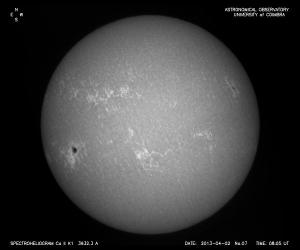 click on image to enlarge
|
- luettu %count kertaa


 The Discover The COSMOS Project is financed by the European Commission's Framework Programme 7 (FP7)
The Discover The COSMOS Project is financed by the European Commission's Framework Programme 7 (FP7)